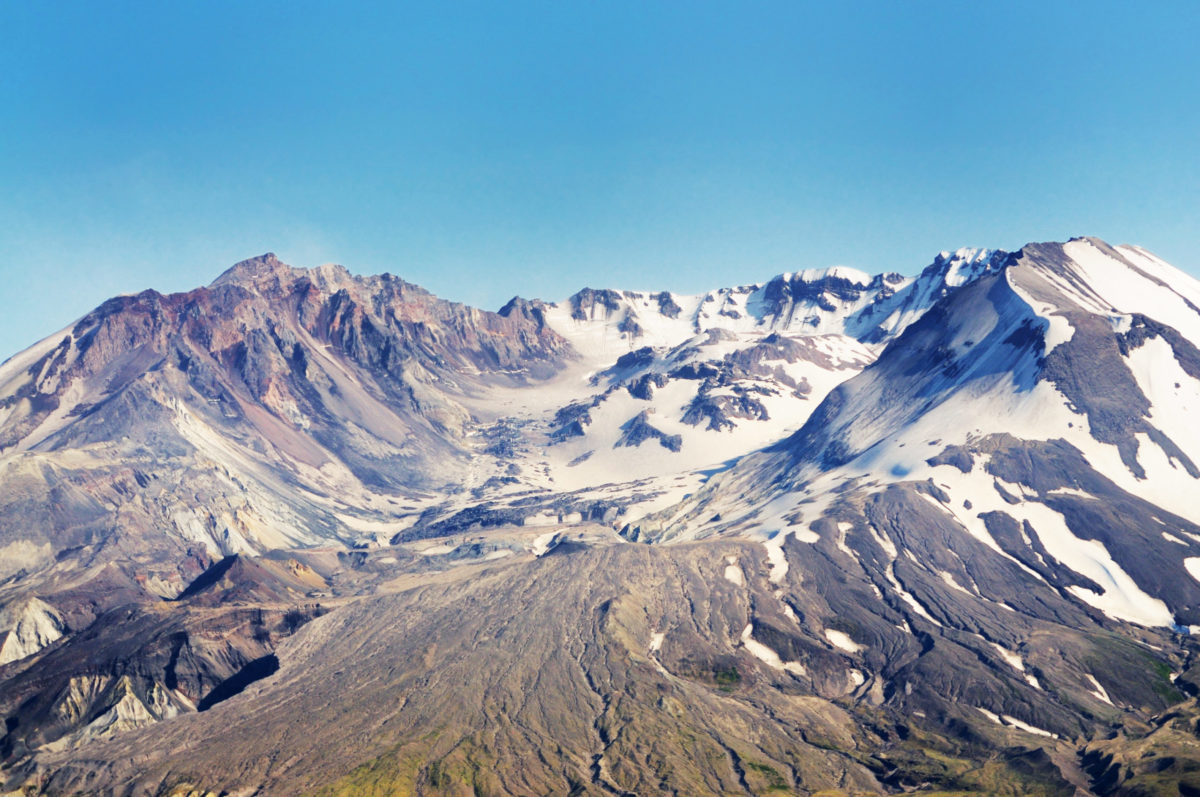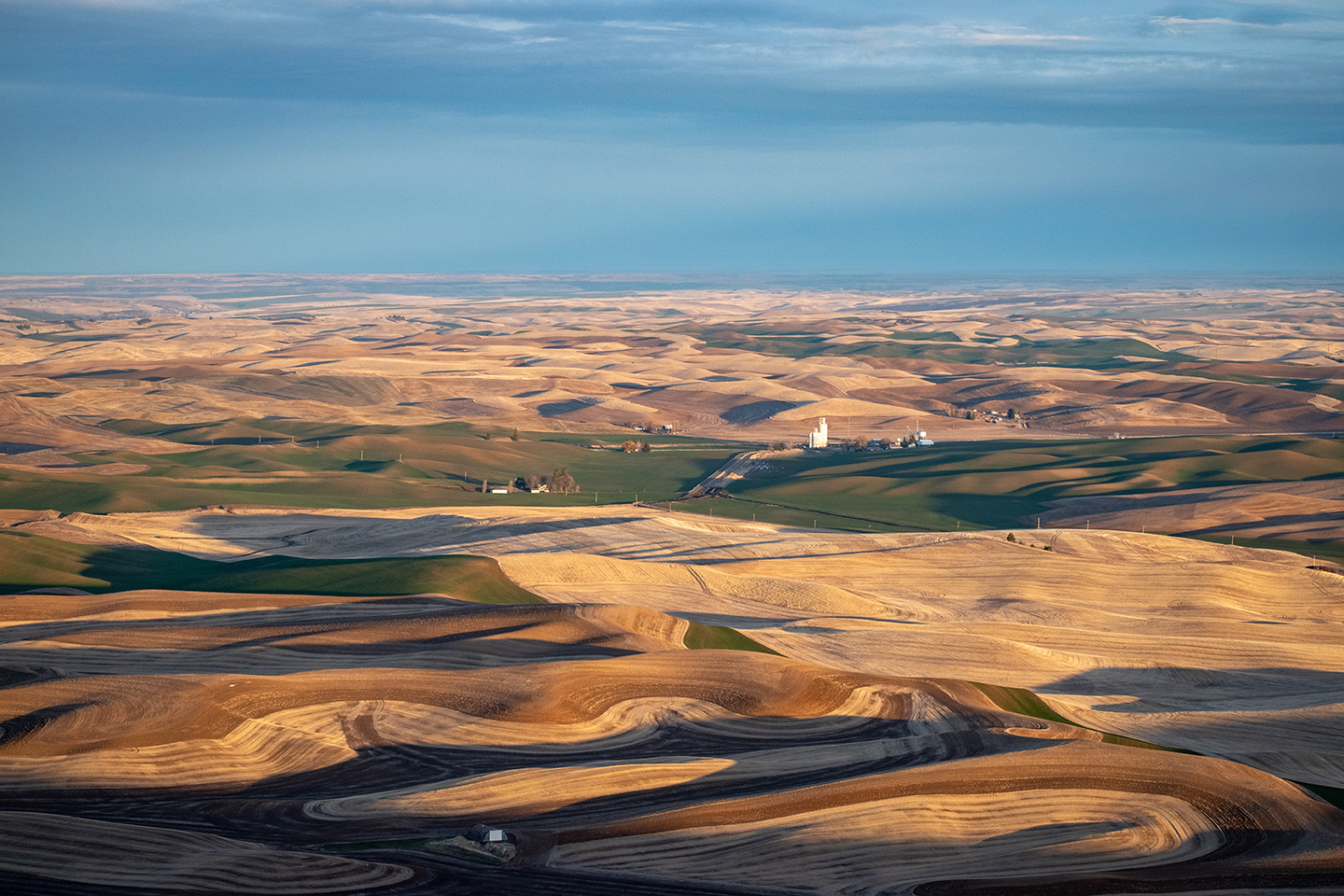Eastern Washington's landscape of wheat fields has been shaped by glaciers, volcanos, floods and wind.
On the Waterville Plateau, wheat fields are rocky and populated by glacial erratics–massive rocks–dropped when glaciers melted a millennia ago. Erupting volcanoes, particularly the ash from the eruption of Mount Mazama 7,700 years ago, was a major contributor to the deep soils of the Palouse. Mount St. Helen’s eruption in Western Washington in 1980 added to the accumulation.


